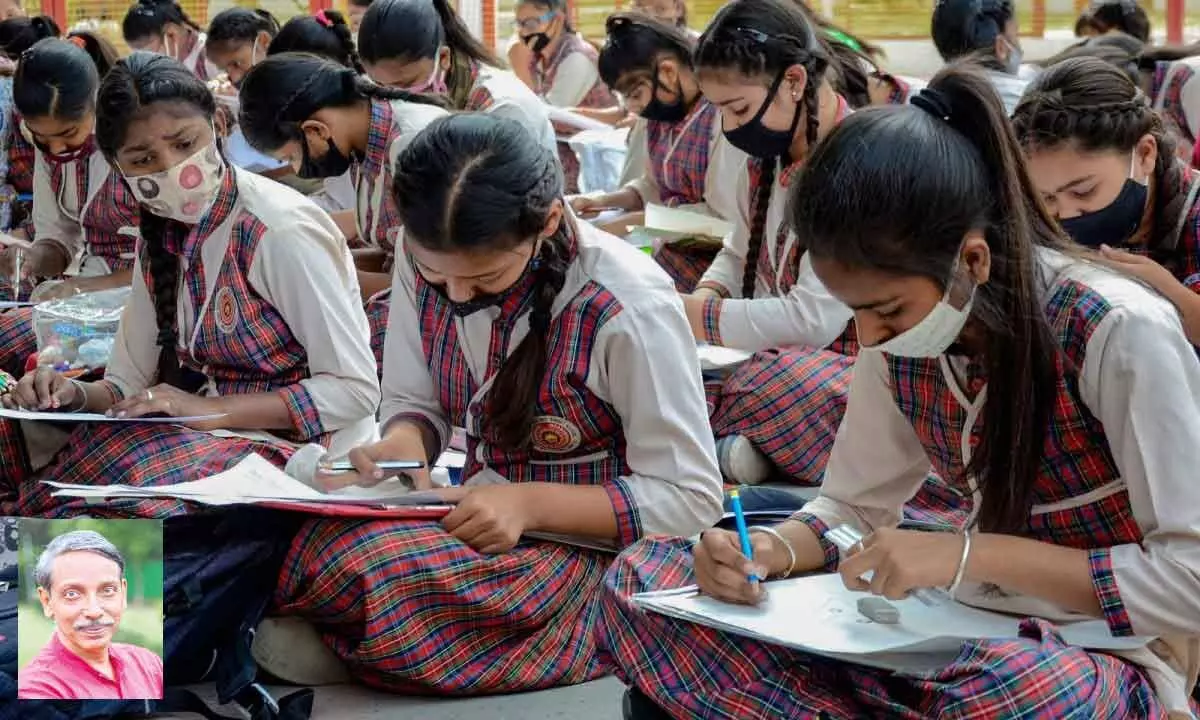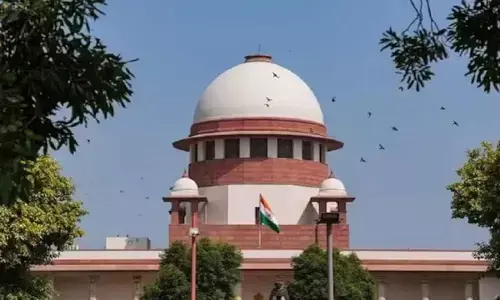NCrF is a broad, enabling framework for all universities: UGC Chairman

The ABC platform allows students to create a standard account where they can store all the credits earned, regardless of the type of learning, i.e., academic, vocational, or experiential learning. The stored credits can be redeemed to obtain the corresponding qualifications by meeting the specified credit requirements for each level and sector. The ABC platform also facilitates the transfer of credits between different educational institutions and sectors, thereby enabling students to pursue multiple pathways of learning and career development. — UGC Chairman Prof M Jagadesh Kumar
New Delhi: With the University Grants Commission (UGC) releasing the National Credit Framework (NCrF), students and parents from across the country now want to know what it is, what's the need for NCrF and how do students earn credits?
UGC Chairman M Jagadesh Kumar answered all these questions related to the higher education system of the country.
Excerpts from the interview:
UGC released the National Credit Framework on Monday. What exactly is it?
The NCrF is a broad enabling framework for all regulatory organizations and all universities, including institutions of national importance. They will be free to notify their detailed implementation guidelines with flexibility for catering to their academic requirements. It is a meta-framework to seamlessly integrate the credits earned through school education, higher education, and vocational and skill education. This meta-framework consists of three verticals:
♦ National School Education Qualification Framework (NSEQF)
♦ National Higher Education Qualification Framework (NHEQF)
♦ National Skills Qualification Framework (NSQF)
What is the need for NCrF?
The NEP2020 emphasizes the integration of general academic education and vocational and skill education, providing seamless horizontal and vertical mobility between the two streams for lifelong learning. NCF provides this mechanism while ensuring equivalence within and between these two education streams.
What is credit, and how do students earn credits?
Credit is the recognition that a learner has completed a prior course of learning, corresponding to a qualification at a given level. Simply put, one credit corresponds to 30 notional learning hours in a year of two semesters. Every semester a student is required to earn a minimum of 20 credits. A student earns 40 credits in one year corresponding to 1200 notional learning hours. But students can also earn more than 40 credits in a year.
NCrF also mentions levels of school education, higher education, and vocational and skill education. What is the meaning of these levels, and how do students progress from one level to another?
The entire school education for the first time in India has level assignments. School education is assigned Level 0 to Level 4. When a student completes Class V, the student is placed at level 1. After completing middle school (Class VI to VIII), the student reaches level 2. Completion of high school (Class IX and X) corresponds to level 3, and Senior Secondary School (Class XI and XII) corresponds to level 4. The credits earned by a student during his entire schooling will be 160 credits.
Higher education levels start from Level 4.5 and end at Level 8. A three-year bachelor's degree will have levels 4.5, 5, and 5.5 corresponding to the first year, second year, and third year. Every year, a student has to earn 40 credits to move to the next level, and by the end of a three-year bachelor's degree, the student will have earned 120 credits. Level 6 corresponds to a 4-year bachelor's degree, Level 6.5 corresponds to a two-year Master's degree for those with a three-year bachelor's degree, and Level 7 corresponds to a two-year Master's degree for those with a four-year undergraduate engineering degree and Ph.D. degree is at level 8. When a student completes a Ph.D., the earned credits would be 8x40 = 320.
What learning modes are permitted in NCrF, and how does one earn credits if the learning methods are different?
Kumar: The credit assignment is a function of the total hours of learning put in by a student in a year versus the full credits available in a year. The learning hours, irrespective of the mode of learning (offline, online, or blended), shall continue to follow the broad principles specified in NCrF. This will enhance the extensive use of technology in education.
How do students store and redeem the credits earned by them to obtain the corresponding qualifications?
Credits accumulated by each student shall be stored in the Academic Bank of Credits (ABC) technology platform. ABC enables every student and educational institution to digitally keep a record of all the credits earned and accumulated throughout life in a standard account. ABC can be used to store irrespective of the type of learning, i.e., academic, vocational, or experiential learning.
Does it mean that even experiential learning can be credited and used for acquiring qualifications?
Yes. NCrF provides the opportunity for creditization and progression pathways for other learnings not credited earlier for awarding a certificate, diploma, and degree for encouraging lifelong learning.
Can you explain how credits earned in one stream can be used while joining another stream?
For example, an ITI pass out (2 years after 10th) along with an additional language course from NIOS attains equivalence of Class 12th certificate along with ITI-National Trade Certificate, which will enable the student to join a University like any other 12th pass student.
Similarly, A 5th-grade student with total accumulated credit points of 200 over the years and undertaking a particular bridge course is eligible to appear for the 8th class examination. Once the student clears it, he will be in grade 8th pass and can continue with 9th grade onwards through mainstream education.
Will other countries recognize our NCrF, and will other countries recognize the qualifications of our students?
The International equivalence and transfer of credits shall be enabled through various multilateral and bilateral agreements between respective regulators of the countries concerned.














